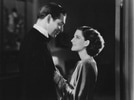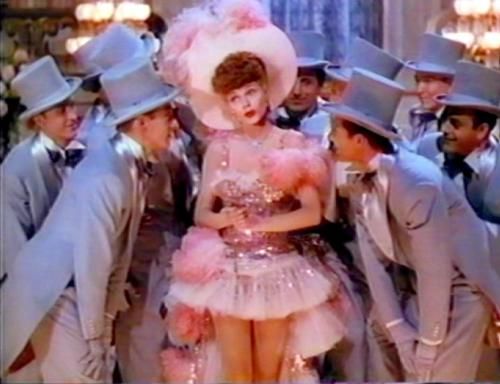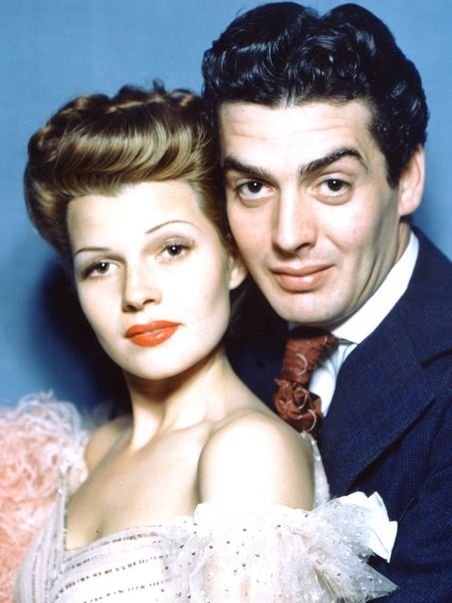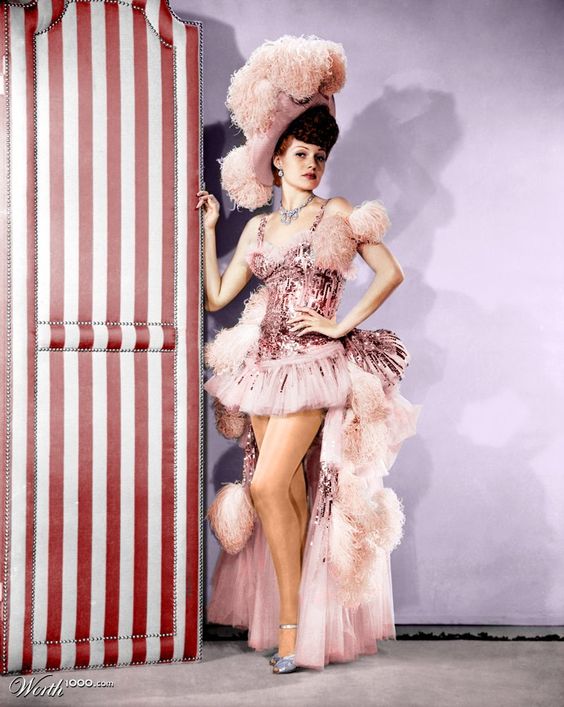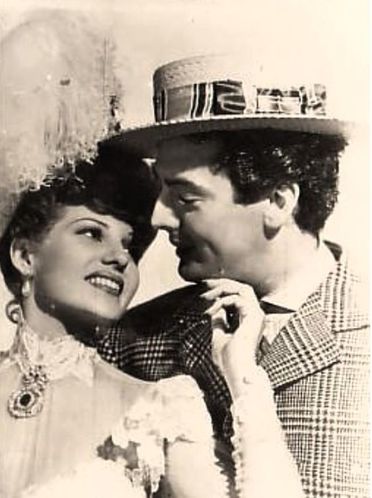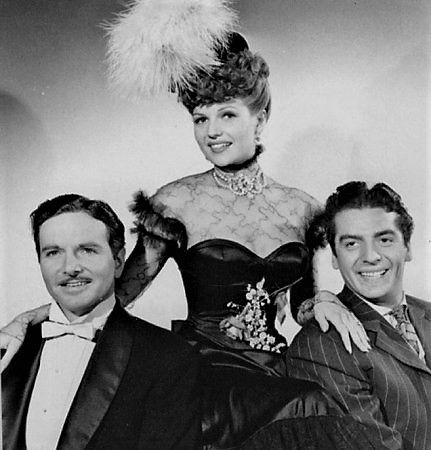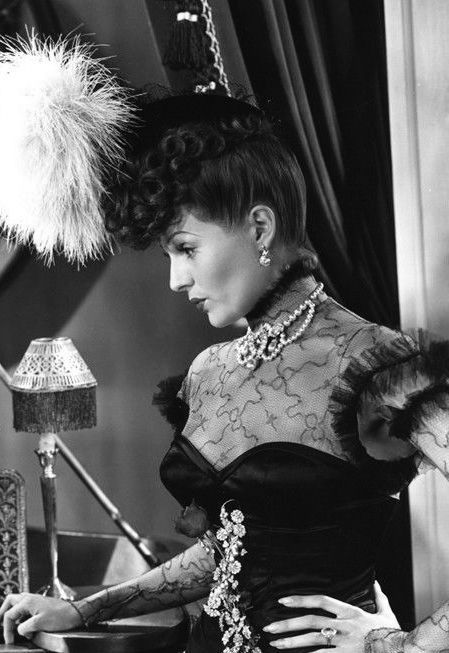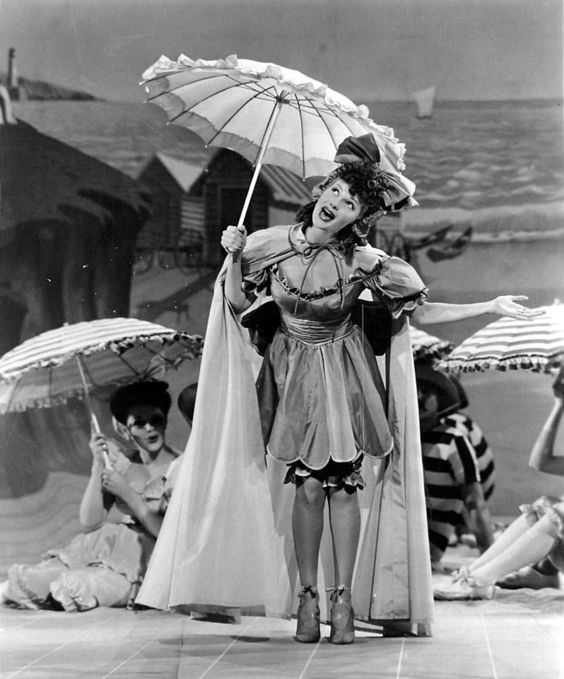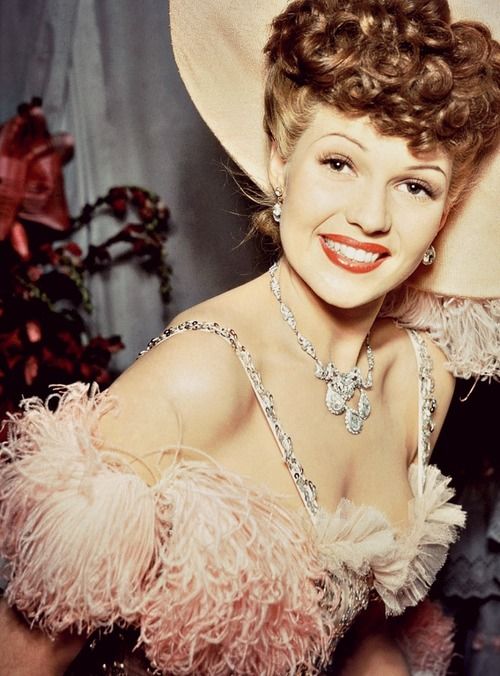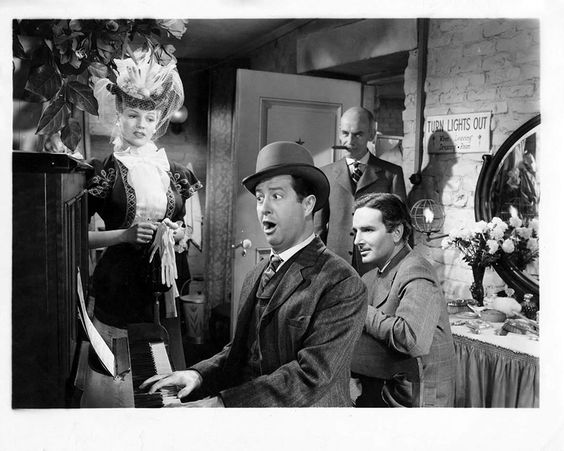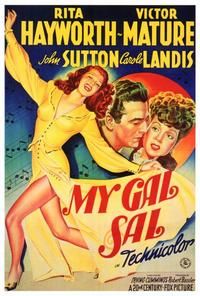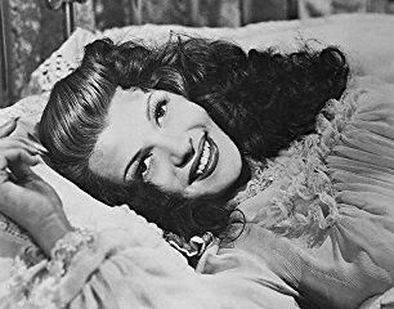Plot: A bio-pic loosely based on the life of Gay 90’s popular songwriter Paul Dresser (Victor Mature) & performer Sally Elliott (Rita Hayworth). My Gal Sal is based on a short story written by Theodore Dreiser (Sister Carrie, An American Tragedy), who was Dresser’s brother & tells the story of Dresser’s rise from medicine show huckster to Tin Pan Alley star & the woman he fought with & loved.
Thoughts: For Rita Hayworth, My Gal Sal was positioned between 2 more famous musicals that she co-starred in with Fred Astaire (Affectionately Yours ’41 & You Were Never Lovelier ’42), so My Gal Sal rarely gets mentioned among Rita’s greatest films, but she gives a fine performance that emphasizes her talents as a dancer & an actress. Released on September 30th, 1942 the film drew solid reviews when released, but played a far more important role in Rita’s off-screen life because at the conclusion of filming she informed her first husband, Edward Judson, that their marriage was over. Her affair with then separated co-star Victor Mature was well known & gave her the confidence to move on from Judson, who had helped launch her career, but was too domineering & abusive to sustain a marriage. The much younger Mature, known as “the poor man’s Charles Boyer” was kind to Rita and asked, rather than told her, what to do. While their romance didn’t last, it did help make the production memorable & at least some of the off-screen chemistry is visible on-screen in their scenes together.
Thoughts: For Rita Hayworth, My Gal Sal was positioned between 2 more famous musicals that she co-starred in with Fred Astaire (Affectionately Yours ’41 & You Were Never Lovelier ’42), so My Gal Sal rarely gets mentioned among Rita’s greatest films, but she gives a fine performance that emphasizes her talents as a dancer & an actress. Released on September 30th, 1942 the film drew solid reviews when released, but played a far more important role in Rita’s off-screen life because at the conclusion of filming she informed her first husband, Edward Judson, that their marriage was over. Her affair with then separated co-star Victor Mature was well known & gave her the confidence to move on from Judson, who had helped launch her career, but was too domineering & abusive to sustain a marriage. The much younger Mature, known as “the poor man’s Charles Boyer” was kind to Rita and asked, rather than told her, what to do. While their romance didn’t last, it did help make the production memorable & at least some of the off-screen chemistry is visible on-screen in their scenes together.
As Mature plays Dresser, he is part cornpone hick, part con man & part arrogant prick. When he shows up on stage in the travelling medicine show in a big city bought suit, he has no idea that he looks ridiculous, but the music he plays intrigues Elliot enough to put his song into her Chicago musical act. It’s a meet cute scene that immediately places Elliott in a dominant positon as she sits in her regal carriage, beautifully dressed, looking down at Dresser, in his ridiculous suit, as he angrily shoos them away for ruining his show. Hayworth plays the scene very simply, but conveys her interest in Dresser with noticeable, but subtle glances. The distinction is clearly drawn that Elliott conveys class & Dresser hucksterism, but that his talent may lift him up.
Vowing to ruin Elliott’s show, Dresser & his love interest Mae Collins (Carole Landis) attend Elliott’s show and while razzing her to distraction, realize that she has taken his number as her own, adding lyrics that suit her. While a tried & true tenant of the romantic comedy, the ‘hate at first sight’ element of their love/hate relationship allows Rita to pitch a bit of a tantrum as Dresser laughs and carries on while she is on stage. What is clear in this first performance piece by Rita (with her voice dubbed by Nan Wynn) is that Rita captivates an audience while performing. Her dancing is exquisite and the vibrant Technicolor adds a magical quality to the number.
Once in New York, Dresser agrees to share credit on the song, but opens himself up to be taken advantage of by a seemingly unscrupulous music publisher. When the song is a hit Paul begins writing in earnest & becomes the darling of the Tin Pan Alley set as he pens hit after hit, each featuring Elliot’s picture on the music sheets, but subtle reminders of Dresser’s rural past keep cropping up, diminishing him as the separation of city/class versus rural/vulgar continues. He is taken to drink once he finds a bit of notoriety, for instance, preferring to write his songs in saloons, while drinking with his cronies. This is mentioned when Dresser crashes a celebration with Elliott, rather than shown, however, but reinforced by Dresser bringing vulgar boxer John L. Sullivan with him & rudely commanding all the attention in the club, so he can perform his new song. When Elliott joins him at the piano their cross purposes are immediately apparent. She wants another hit to perform & he wants the adoration of the audience. They smile at each other, but just as much look beyond to see what the song will bring. Dresser has other ideas after the song is finished when he propositions Elliott & tells her she’ll be coming home with him & not Fred, as she responds. For a moment Dresser’s bravado puts him on an equal footing to Elliott & the spark of romance is wonderfully underplayed played by both Hayworth & Mature.
When Dresser arranges for Fred (John Sutton) to be called away, Dresser does indeed take Elliott home, with a romance budding on the way. While she’s able to get rid of him that night with a handshake, after he makes it all the way to her hotel suite door (“I’d like to look around some more”), the romantic net has been cast. This whole sequence features Mature at his devilish best, flirting shamelessly, using bits of business, like biting his hat when she closes the door, to overwhelm her & throwing around just enough sexual innuendo to get past the censors. Rita’s knowing looks make it clear Elliott knows what’s going on, but is helpless to repel Dresser’s charms for too long. The next day, when he appears at her door, having moved in across the hall, she casually dismisses him, not letting his charm begin to overwhelm her. When he stays in her suite all day composing a romantic ballad, however, she returns to be knocked off her feet and resoundingly kissed. (In a momentary break from disbelief I must confess that the dubbing of this number is very unconvincing. Neither Hayworth nor Mature’s voice double seems to fit this song in particular.) As the shot dissolves with a kiss & returns as she arrives late for her performance the implication is that a lot more went on in that dissolve than could be mentioned or more openly expressed for the censors, but the romance is on full steam. The hits keep coming too as a montage of sheet music & cakes shows that everything Dresser pens turns up roses.
Vowing to ruin Elliott’s show, Dresser & his love interest Mae Collins (Carole Landis) attend Elliott’s show and while razzing her to distraction, realize that she has taken his number as her own, adding lyrics that suit her. While a tried & true tenant of the romantic comedy, the ‘hate at first sight’ element of their love/hate relationship allows Rita to pitch a bit of a tantrum as Dresser laughs and carries on while she is on stage. What is clear in this first performance piece by Rita (with her voice dubbed by Nan Wynn) is that Rita captivates an audience while performing. Her dancing is exquisite and the vibrant Technicolor adds a magical quality to the number.
Once in New York, Dresser agrees to share credit on the song, but opens himself up to be taken advantage of by a seemingly unscrupulous music publisher. When the song is a hit Paul begins writing in earnest & becomes the darling of the Tin Pan Alley set as he pens hit after hit, each featuring Elliot’s picture on the music sheets, but subtle reminders of Dresser’s rural past keep cropping up, diminishing him as the separation of city/class versus rural/vulgar continues. He is taken to drink once he finds a bit of notoriety, for instance, preferring to write his songs in saloons, while drinking with his cronies. This is mentioned when Dresser crashes a celebration with Elliott, rather than shown, however, but reinforced by Dresser bringing vulgar boxer John L. Sullivan with him & rudely commanding all the attention in the club, so he can perform his new song. When Elliott joins him at the piano their cross purposes are immediately apparent. She wants another hit to perform & he wants the adoration of the audience. They smile at each other, but just as much look beyond to see what the song will bring. Dresser has other ideas after the song is finished when he propositions Elliott & tells her she’ll be coming home with him & not Fred, as she responds. For a moment Dresser’s bravado puts him on an equal footing to Elliott & the spark of romance is wonderfully underplayed played by both Hayworth & Mature.
When Dresser arranges for Fred (John Sutton) to be called away, Dresser does indeed take Elliott home, with a romance budding on the way. While she’s able to get rid of him that night with a handshake, after he makes it all the way to her hotel suite door (“I’d like to look around some more”), the romantic net has been cast. This whole sequence features Mature at his devilish best, flirting shamelessly, using bits of business, like biting his hat when she closes the door, to overwhelm her & throwing around just enough sexual innuendo to get past the censors. Rita’s knowing looks make it clear Elliott knows what’s going on, but is helpless to repel Dresser’s charms for too long. The next day, when he appears at her door, having moved in across the hall, she casually dismisses him, not letting his charm begin to overwhelm her. When he stays in her suite all day composing a romantic ballad, however, she returns to be knocked off her feet and resoundingly kissed. (In a momentary break from disbelief I must confess that the dubbing of this number is very unconvincing. Neither Hayworth nor Mature’s voice double seems to fit this song in particular.) As the shot dissolves with a kiss & returns as she arrives late for her performance the implication is that a lot more went on in that dissolve than could be mentioned or more openly expressed for the censors, but the romance is on full steam. The hits keep coming too as a montage of sheet music & cakes shows that everything Dresser pens turns up roses.
Casting back to the premise of the first act regarding class versus vulgarity, Dresser now ascends to mingle with society folk, taking him away from Elliot; in essence jumping from the gutter to the penthouse (Elliott, et al refer to themselves a regular folk) on the back of his hit songs. Unfortunately, the gaping hole in the plot is also exposed as Dresser throws over Elliot/Hayworth for the Countess Mariana Rossini (Mona Maris). As Hayworth famously said a decade later “they always go to bed with Gilda, but wake up next to me,” and even that sentiment doesn’t paper over why Dresser would move on from such a ravishing beauty as Elliott/Hayworth just to climb a society rung. Also perplexing is that with Fred constantly hanging around Elliott, professing his love, there was a natural dramatic wrinkle that would have placed the break at its most logical source, the more dynamic & worldly Elliott. That she actually apologizes the next morning for her curt dismissal of the Countess belies her deep seated jealousy. As he takes a quick tub, she destroys all the beautiful clothing he has recently purchased & plans to use on a cruise to Cuba with the Countess. His revenge lands him in jail, where he begins to work his way back into her heart (and realizing the error of his ways) by hiring a barbershop quartet to sing his forlorn love some beneath her balcony.
When he swears off the countess & writes another hit song, everything seems right again. The musical number, performed in a literal framing device, a picture frame around the stage, is a nod to Dresser’s Indiana home called “On the Banks of the Wabash.” Filled with idyllic images of simple rural life, coupled with bright colorful costumes, the musical break highlights Hayworth’s dancing chops as she moves from ballroom to square dancing & tap, effortless gliding across the stage. The idyllic scene recalls Dresser’s simpleton beginnings and is somewhat of a harbinger of things to come. No sooner has he proposed & been politely turned turn down for a more ‘romantic’ conclusion to his evening (“I never would have asked you to marry me if I thought you were going to act like this!”) than he is tricked into defending his honor to fight a duel with the Countesses husband. Once again, the rube falls for a high society gag & he ends up at the Countesses party, staying for drinks & not returning until morning. Again, the plot twist involving he Countess rings false because his anger evaporates when presented with a drink offer, never considering his promise or the woman who has agreed to marry him! “I can’t stay until Saturday (wedding day), but I don’t think there’s any harm in another drink” he slyly tells the Countess.
When he swears off the countess & writes another hit song, everything seems right again. The musical number, performed in a literal framing device, a picture frame around the stage, is a nod to Dresser’s Indiana home called “On the Banks of the Wabash.” Filled with idyllic images of simple rural life, coupled with bright colorful costumes, the musical break highlights Hayworth’s dancing chops as she moves from ballroom to square dancing & tap, effortless gliding across the stage. The idyllic scene recalls Dresser’s simpleton beginnings and is somewhat of a harbinger of things to come. No sooner has he proposed & been politely turned turn down for a more ‘romantic’ conclusion to his evening (“I never would have asked you to marry me if I thought you were going to act like this!”) than he is tricked into defending his honor to fight a duel with the Countesses husband. Once again, the rube falls for a high society gag & he ends up at the Countesses party, staying for drinks & not returning until morning. Again, the plot twist involving he Countess rings false because his anger evaporates when presented with a drink offer, never considering his promise or the woman who has agreed to marry him! “I can’t stay until Saturday (wedding day), but I don’t think there’s any harm in another drink” he slyly tells the Countess.
When Elliott catches him coming home at dawn the next morning she dumps him and goes on tour to San Francisco. Even the sunny disposition of her musical numbers cannot hide her heartbreak. She is literally dressed in a beach costume singing and dancing about love under the sun (and a well-placed umbrella). When a song huckster (Phil Silvers) peddles a tune called “My Gal Sal” composed by Dresser, but played off as written by a ‘southern gentlemen’ Elliott can’t wait to turn it into her next big production number. Only when Dresser comes to hear it performed does the couple realize they been played to get back together.
My Gal Sal is not a major picture in Rita’s career, but it is very pleasant to listen to and to watch. The bright Technicolor palette brings out her beauty and allows for high contrast scenes that show off her dancing skills. The romantic chemistry between Hayworth & Mature is an added bonus, but does not overwhelm the picture. It is playful and smart and makes My Gal Sal a solid movie that adds to Hayworth’s career.
Category: Musical
See Also: Affectionately Yours, You Were Never Lovelier, Gilda
Random Notes & Quotes:
*Director Irving Cummings was a 20 year Fox house director who was nominated for a Best Director Oscar for In Old Arizona ((1930) & directed 3 Shirley Temple Movies during the 1930’s.
*The Role of Sally Elliott was imagined by Fox Studio chief Darryl F. Zanuck to be played by Alice Fays, but she became pregnant. The role was subsequently offered to Betty Grable & Mae West before the studio finally settled on Rita, borrowing her from Columbia Pictures. The part of Dresser was supposed to have been played by Don Ameche in the Faye version of the cast.
*The real life Paul Dresser looked nothing like Victor Mature and was largely overweight for most of his adult life. He died in 1906 at the age of 49. “On the Banks of the Wabash” was the second highest selling song of the 19th century.
Sources:
If This is Happiness: ABiography of Rita Hayworth. Barbara Leaming. Viking Press. 1989.
Rita Hayworth: The Time, The Place & The Woman. John Kobal. W.H. Allen. 1979.
My Gal Sal is not a major picture in Rita’s career, but it is very pleasant to listen to and to watch. The bright Technicolor palette brings out her beauty and allows for high contrast scenes that show off her dancing skills. The romantic chemistry between Hayworth & Mature is an added bonus, but does not overwhelm the picture. It is playful and smart and makes My Gal Sal a solid movie that adds to Hayworth’s career.
Category: Musical
See Also: Affectionately Yours, You Were Never Lovelier, Gilda
Random Notes & Quotes:
*Director Irving Cummings was a 20 year Fox house director who was nominated for a Best Director Oscar for In Old Arizona ((1930) & directed 3 Shirley Temple Movies during the 1930’s.
*The Role of Sally Elliott was imagined by Fox Studio chief Darryl F. Zanuck to be played by Alice Fays, but she became pregnant. The role was subsequently offered to Betty Grable & Mae West before the studio finally settled on Rita, borrowing her from Columbia Pictures. The part of Dresser was supposed to have been played by Don Ameche in the Faye version of the cast.
*The real life Paul Dresser looked nothing like Victor Mature and was largely overweight for most of his adult life. He died in 1906 at the age of 49. “On the Banks of the Wabash” was the second highest selling song of the 19th century.
Sources:
If This is Happiness: ABiography of Rita Hayworth. Barbara Leaming. Viking Press. 1989.
Rita Hayworth: The Time, The Place & The Woman. John Kobal. W.H. Allen. 1979.
